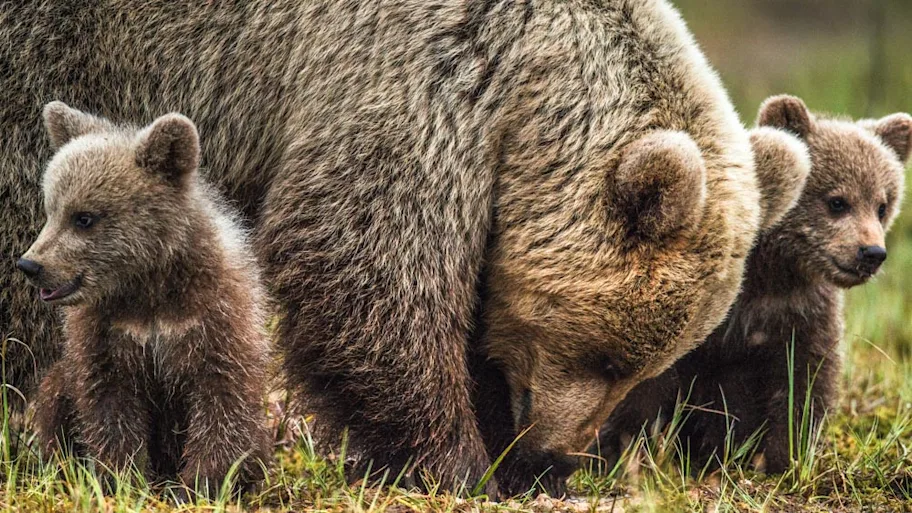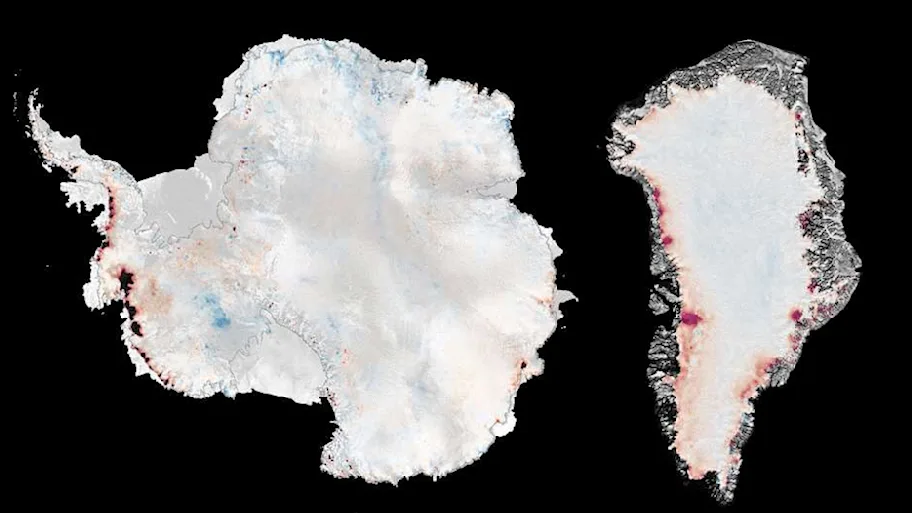
- Science News
- Featured news
- Traditional knowledge sheds light on changing East Greenland climate and polar bear hunt
Traditional knowledge sheds light on changing East Greenland climate and polar bear hunt

The study provides a valuable baseline for monitoring future changes as well as the polar bear population. Image: Shutterstock
Inuit polar bear hunters report changes in their subsistence hunting patterns as well as polar bear ecology over the past decade, due to changing ice conditions and a quota system started in 2006.
— By Anna Sigurdsson
Inuit polar bear subsistence hunters from two East Greenland regions report changes to their hunting patterns as well as polar bear distribution and behavior due to decreasing sea ice and the introduction of hunting quotas in 2006. The hunters have observed large climate changes in their hunting areas — including warmer weather, less sea ice and disappearing glaciers — which the majority say have affected the polar bear hunt. More hunters are now using boats than dog sledges due to loss of sea ice. The hunters also note that more polar bears are coming into their communities looking for food, and that the bears are eating more seal parts than previously.
Published in Frontiers in Marine Science, the study is the first in nearly 20 years to document traditional knowledge on polar bear catches and ecology in East Greenland — providing a valuable baseline for monitoring future changes as well as the polar bear population.
Inuit hunters have a strong understanding of the Arctic environment and can share information passed down from older generations as well as from their personal experiences. This is very valuable to management and conservation efforts.
Although traditional ecological knowledge about polar bears has been collected extensively in West Greenland, no comprehensive interview studies on polar bears have been carried out in East Greenland for close to two decades. Thus, current perspectives of polar bear hunters in this area are not well documented.
“Our research was motivated by the importance of obtaining local perspectives from subsistence hunters in East Greenland about the subpopulation of polar bears,” says author Kristin L. Laidre, principal scientist at the Polar Science Center, University of Washington, USA. “There had not been an interview study for several decades so a new interview survey was important to conduct, especially before starting an assessment of the subpopulation.”
Related: Combining genomics with farmers’ traditional knowledge to improve wheat production
In interviews conducted by the Greenland Institute of Natural Resources, researchers gathered Inuit perspectives on polar bear subsistence quotas and hunting strategies from 25 full-time polar bear hunters in Tasiilaq and Ittoqqortoormiit. The aim was to gain an understanding of how climate change is affecting the polar bear subsistence hunt, and to document observed changes in polar bear distribution, abundance and biology over the last two decades.
All interviewed hunters reported that they had observed changes to sea ice conditions. They noted, for example, that there is less ice, that the sea ice does not form or that it forms later than before, and that it is now more dangerous. Fifteen Tasiilaq hunters also said that the glaciers are disappearing very quickly. All Tasiilaq hunters noted changes in the weather, marked by worsened weather, warmer temperatures, more storms and more wind. Similarly, 89% of Ittoqqortoomiit hunters reported changing weather with warmer temperatures and more humidity.
Seventy-three percent of Tasiilaq hunters and 88% of Ittoqqortoormiit hunters said that climate changes had affected the polar bear hunt. Furthermore, 100% of interviewed Tasiilaq hunters and 80% of Ittoqqortoomiit hunters reported that they hunt more with boats than with dog sledges compared to 10-15 years ago, due to decreasing sea-ice mass and larger extents of open water. One hunter said that he had gotten rid of his sledge, since he had no use for it anymore.
Neither Ittoqqortoormiit nor Tasiilaq hunters reported major changes in the bears’ body condition, which is consistent with previous reports from indigenous people in other areas. However, Tasiilaq hunters noted that polar bears are consuming more seal parts than before, such as bones and skin.
In addition, 81% of Tasiilaq hunters and 78% of Ittoqqortoormiit hunters noted that more polar bears are coming into towns and settlements compared to 10-15 years ago. Moreover, hunters from both regions noted that more bears were caught near settlements than previously. While some hunters explained this as a result of the hunting quotas increasing the abundance of polar bears, others mentioned decreasing sea ice as a possible reason. Two hunters suggested that polar bears are coming closer to the towns because they have less to eat and are searching for food.
The researchers report that 40% of Tasiilaq respondents had caught between 10-19 polar bears in their lifetime, while 67% of Ittoqqortoormiit respondents had lifetime catches of more than 20 bears. The general consensus in Tasiilaq is that the quotas are necessary, whereas hunters in Ittoqqortoomiit do not view the quotas as necessary. Hunters in both areas would like to see a small portion of the quota used for trophy hunting, which is currently illegal in Greenland.
The researchers point out that understanding the impact of management decisions and the decreasing sea ice is essential for polar bear conservation and management, as well as for the human communities that rely on hunting polar bears. Thus, this research provides an important baseline for monitoring future changes and for managing the polar bear population.
“This information can be used to directly guide scientific lines of inquiry, improve management decisions, and overall ensure that traditional ecological knowledge is considered in the conservation and management of polar bears,” concludes Laidre.
The research is part of a special article collection on the impact of climate change on subsistence users of living marine resources.
Original article: Traditional Knowledge About Polar Bears (Ursus maritimus) in East Greenland: Changes in the Catch and Climate Over Two Decades
REPUBLISHING GUIDELINES: Open access and sharing research is part of Frontiers’ mission. Unless otherwise noted, you can republish articles posted in the Frontiers news blog — as long as you include a link back to the original research. Selling the articles is not allowed.






